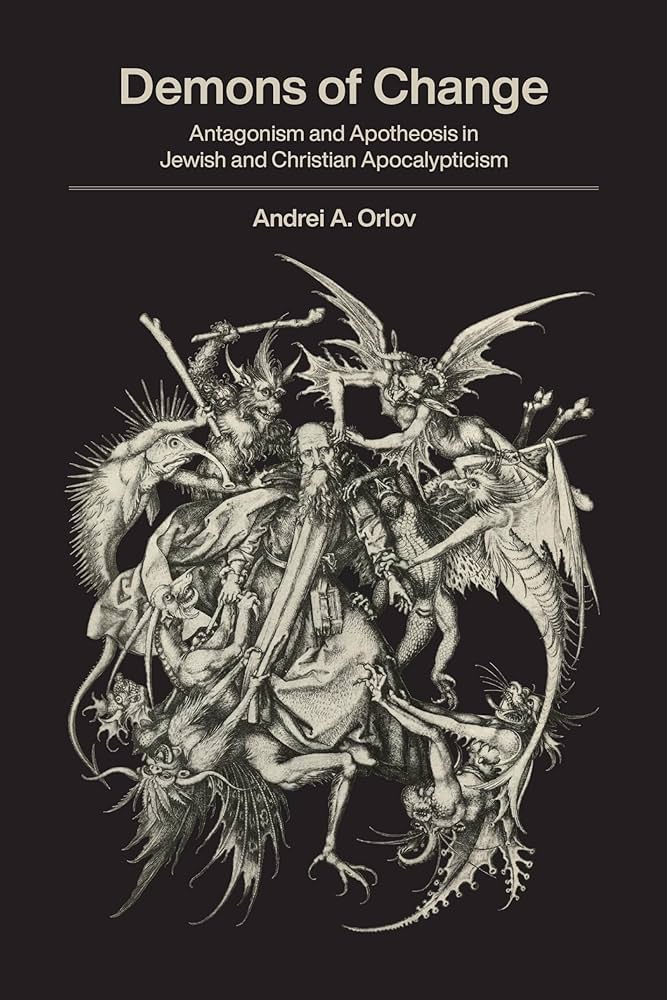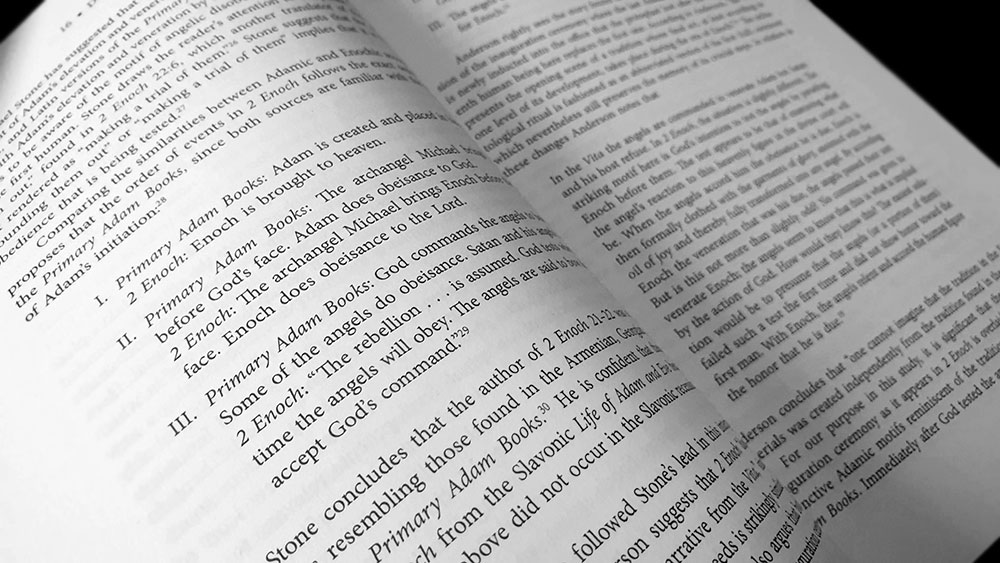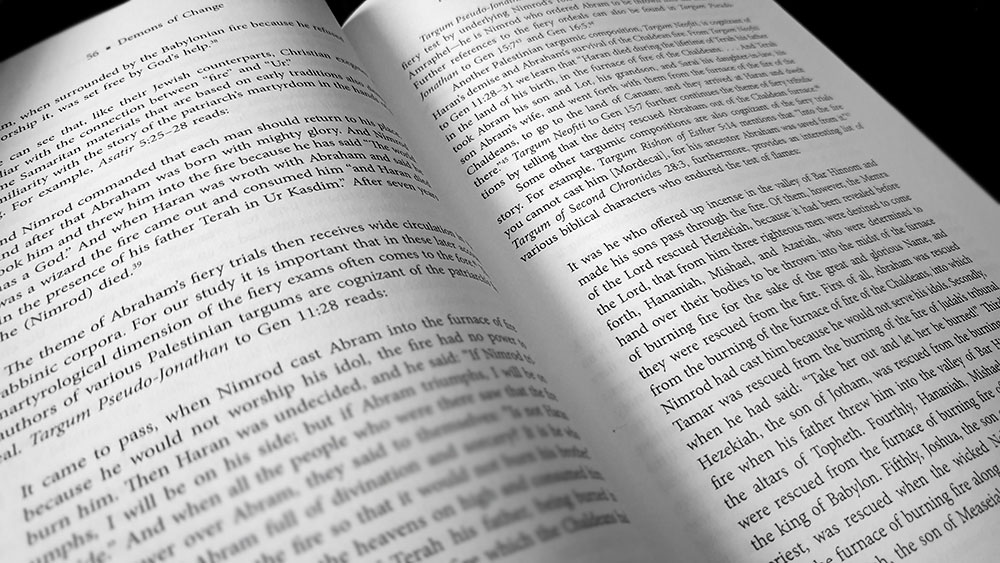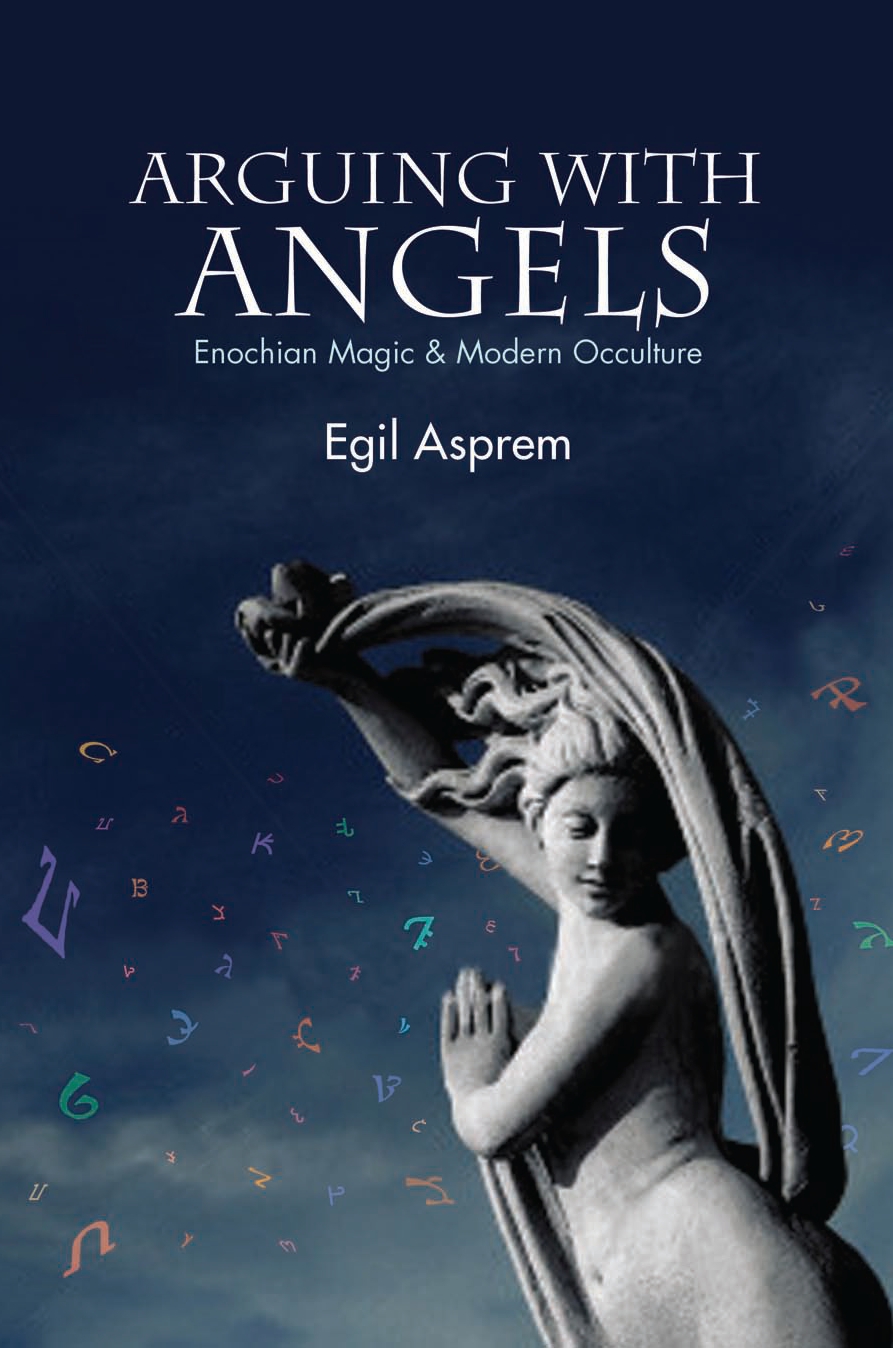 Andrei Orlov is Professor of Judaism and Christianity in Antiquity at Marquette University in Milwaukee, Wisconsin, and has previously published several titles through SUNY Press. With his past considerations of heavenly doppelgangers, divine scapegoats, and the place of Azazel and Satanael in early Jewish demonology, Orlov often has a focus on the demonic and this is the case here as well. In this instance, it is the idea of an adept’s combat with demonic forces being a prerequisite for their apotheosis, a combative tempering within the forge of diabolical antagonism. Such combat does not simply represent a standard hero’s journey in which the protagonist defeats a monster on their way to maturity, be it Marduk and Tiamat, Sigurd and Fafnir, or Luke Skywalker and the Rancor. Rather, this process of deification is one in which the antagonist not only loses the battle but also their status, with the hero being apotheosised at their expense, taking their place (and in some instances, their clothes) and assuming their role.
Andrei Orlov is Professor of Judaism and Christianity in Antiquity at Marquette University in Milwaukee, Wisconsin, and has previously published several titles through SUNY Press. With his past considerations of heavenly doppelgangers, divine scapegoats, and the place of Azazel and Satanael in early Jewish demonology, Orlov often has a focus on the demonic and this is the case here as well. In this instance, it is the idea of an adept’s combat with demonic forces being a prerequisite for their apotheosis, a combative tempering within the forge of diabolical antagonism. Such combat does not simply represent a standard hero’s journey in which the protagonist defeats a monster on their way to maturity, be it Marduk and Tiamat, Sigurd and Fafnir, or Luke Skywalker and the Rancor. Rather, this process of deification is one in which the antagonist not only loses the battle but also their status, with the hero being apotheosised at their expense, taking their place (and in some instances, their clothes) and assuming their role.
Orlov has a somewhat verbose academic style, particularly in the introduction where he establishes the core thesis and maps out a general framework. It’s all perfectly legible, but it does feel almost poetic in its grandiloquence, with a noticeable preference for certain field-specific key words that get quite the workout. And wonderful words they are too, can’t fault him there as some of them are personal favourites as well, with a surfeit of ‘eschatologicals,’ ‘protologicals’ ‘metamorphoses,’ soteriological,’ ‘sacerdotal’ (five times in one paragraph), and the delightful double barrel of ‘psychodemonic anthropologies;’ a collocation that really should be slotted into more everyday conversations.
Demons of Change is divided into four chapters, each dedicated to a particular variation of these antagonistic interactions, beginning with, well, the beginning, in which the battle is betwixt God and Satan, with the primordial Adam as the protagonist who is destined to usurp the mantle of his antagonist. Key to this theme of angelic opposition is what Orlov describes as an induction ritual, in which the protagonist is presented before the angels as tselem or image of the divine, one whose arrival threatens their privileged existence, and is then either venerated or opposed by them. In apocryphal versions of the creation myth, such as those found in the Primary Adam Books, Satan’s refusal to venerate Adam is what leads to his fall from grace, abandoning the vestments of heaven to the protoplastic Adam and assuming a dark mantle. Orlov shows how this Adamic template was applied to other significant figures, beginning with the antediluvian patriarch Enoch who was caught up to heaven upon his death and, in an act of apotheosis, was presented as an Imago Dei to the angels (who, seemingly aware of the Satan-Adam precedent, knew not to make a fuss this time). Jacob’s wrestling with the angel at Bethel and the vision of the ladder stretching between heaven and earth also aligns with this theme, as does an excerpt from the Exag?g? of Ezekiel the Tragedian in which Moses describes a vision of being enthroned in heaven and having stars process in front of him in obeisance.
The full circle of this motif then occurs in the New Testament, where Jesus, the very literal iqonin or image of God, is tempted by Satan in the desert. Satan attempts to reverse his interaction in heaven with the prelapsarian Adam, compelling this New Adam to bow before him, offering him all the kingdoms of the world if he does so. When Christ refuses this genuflexion rematch, Satan departs and the gospels of both Matthew and Mark refer to angels then ministering to Jesus, drawing an inevitable parallel to the angelic attention paid in the climax of the induction rituals of other incarnations of the Imago Dei. Orlov studiously documents the evolution of these ideas and how such parallels have been drawn before in both Talmudic and Christian commentary.
In his second chapter, Orlov turns his attention to stories of fiery ordeals, in particular an apocryphal tale in which a tyrant (sometimes identified as Nimord) tried to burn a young Abraham for refusing to worship fire. The story is found in the midrashic Genesis Rabbah, but the focus here is on a version from the Slavonic recension of The Apocalypse of Abraham, a pseudepigrapha, that includes details not found elsewhere and is cited with some frequency across Orlov’s work. Thought to have been written sometime in the first or second century CE, the most obvious parallel to The Apocalypse of Abraham is the chronologically older but textually younger biblical tale of Shadrach, Meshach, and Abednego in the fiery furnace from the book of Daniel, with both including elements of oppressive leaders and angelic intervention. On the surface, this theme could feel somewhat divergent from the angelic and demonic antagonisms documented in the first chapter, but by drawing parallels with the fiery martyrdom of Christian saints, such as Pionius and Polycarp, Orlov shows how it relates to this book’s other theme of apotheosis. Orlov gets into the weeds here, drawing little details from various variations of the theme of fiery martyrdom to flesh out an interpretation of the apocalypse as one concerned with a ritualised apotheosis, including ideas of Abraham as a bound sacrifice whose igneous ordeal elevates him to heaven. Sometimes the recourse to chronologically and culturally diverse, but circumstantially similar, sources feels like a stretch, with the tiniest of minutiae being mentioned if it helps the speculative narrative.
This second chapter is significant because much of this book’s remainder flows from The Apocalypse of Abraham and its characters and antagonists. While there are human antagonists in the various accounts of fiery martyrdom, with the various tyrannical rulers (Nimord, Nebuchadnezzar, Marcus Aurelius) seemingly acting as avatars of demonic malice, the second section of the apocalypse features an actual demonic adversary, Azazel, who assumes the form of an unclean bird and attempts to interfere with a sacrifice Abraham performs on the summit of Mt. Horeb. The angel Yahoel assists Abraham by fighting off Azazel, and rewards the patriarch with celestial garments that had been originally set aside for the fallen angel. This allows Orlov to return to one of his favourite themes, the gifting of ritual clothing, and to use that most favoured of his phrases, sacerdotal garments. Matters sacerdotal and sartorial continue in the third chapter with a brief, and on the surface, diverting, discussion of the cosmological symbolism of the sash worn by the Hebrew high priest. The snake-like appearance of the sash’s material has long drawn comparisons with the primordial serpent Leviathan and Orlov details how the symbolism of the outer waters and its monstrous inhabitant in Jewish cosmogony had a liturgical application, particularly in the macrocosmic design of the temple in Jerusalem as a vision of the earth. As such, the High Priest could be interpreted as an eschatological Adam, an Adam Kadmon whose very form represents creation as a dynamic process of divine exile-rectification hitlabshut (‘enclothement’). Orlov affirms this interpretation by mentioning a tradition found in some Jewish traditions (as recorded in the Aramaic Targum Pseudo-Jonathan and the midrash Pirke de Rabbi Eliezer) that when Adam and Eve were clothed by God, he did so with garments made from the sloughed off skin of the Edenic serpent; repeating, once again, the motif of the clothing of a demoted antagonist being given to their replacement.
For here on out it is pretty much Everybody Loves Azazel for almost the rest of Demons of Change, with the scapegoat returning in the fourth and shortest chapter with a little comparison between the demons ritualised sacrifice (as documented in Leviticus and elaborated on by Mishnah Yoma as well as a variety of apocalypses), and the description of Great Beast’s descent from heaven and subsequent binding from the Book of Revelation. Orlov breaks down the motifs of the scapegoat ritual (banishment to the wilderness, a binding and descent from a cliff, being sealed away in an abyss, a temporary healing of the earth, and a momentary release before a final demise) and compares them to key points in the descent of the beast. They make for a neat, but by no means conclusive, simulacrum, although once again, the comparisons can feel a tiny bit circumstantial and finessed. Given the brevity of this chapter, there’s obviously not much more than can be pulled from this comparison, but it’s an attractive interpretation nonetheless.
In the penultimate chapter, Orlov broadly considers the will of Azazel and other demonic forces (such as Matema) but also uses this section as a demonological survey of how the nature of demons and spirits were understood in a variety of apocalypses and pseudepigrapha. Finally, and straying from Azazel, the concluding chapter deals with the use of fear as a component in divine encounters, with a particular focus on 2 Enoch, where this emotion often precedes their apotheosis.
Demons of Change runs to 262 pages, but with its six chapters it is something of a short book with 100 of those pages being taken up by a bibliography, an index, and rather extensive endnotes. For those who have read any of Orlov’s previous works, there is a certain atmosphere of familiarity, given the outsize role the Apocalypse of Abraham plays here and in his entire oeuvre. With that said, it is a text that warrants Orlov’s repeat visits, as he brings a different focus in this investigation and clearly knows his source material. The first chapter remains the highlight and a supreme statement of thesis, but the resulting ones have much to offer in fleshing out some of these themes.
Published by SUNY Press



